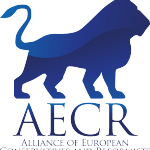Professor Hannes H. Gissurarson, a member of the RNH Academic Council and the centre’s academic director, gives a lecture at the conference Forum da liberdade in Porto Alegre in Brazil 8–9 April 2013. This is an annual conference, organised by young entrepreneurs and businessmen in the state of Rio Grande do Sul in Brazil. Other lecturers this year include Alexandre Tombini, Governor of the Brazilian Central Bank, Jorge Gerdau Johannpeter, a leading Brazilian businessman, Julio Saguier, director of La Nación in Argentina, Paulo Kakinoff, director of Brazilian airlines GOL, José Mariano Beltrame, Minister of Security in the state of Rio de Janeiro, and Professor Randy T. Simmons, Utah State University. Professor Gissurarson speaks at a panel 18–19.30 Tuesday 9 April. He shares the panel with Eduardo Campos, Governor of the state of Pernambuco and leader of Brazil’s Socialist Party, and Dr. Yaron Brook, director of the Ayn Rand Institute in California.
 This year, the conference theme is from the works of Frédéric Bastiat, the 19th Century French journalist and economist, on “What is Seen and What is Unseen in Political Economy”. The first Icelandic book on economics, Audfraedi by Arnljotur Olafsson, published in 1880 (and reprinted in 1988), was under a strong influence from Bastiat, and Bastiat’s Laws were translated into Icelandic in 2001. Professor Gissurarson’s lecture is called “Making the Invisible Hand Visible: Reflections on the Political Economy of Freedom”. There he will point out some non-obvious implications of economic and political theory, not least about comparative economic systems and about the relationship between tax rates and tax revenues. His lecture is a part of the joint project by AECR and RNH, “Europe, Iceland and the Future of Capitalism”.
This year, the conference theme is from the works of Frédéric Bastiat, the 19th Century French journalist and economist, on “What is Seen and What is Unseen in Political Economy”. The first Icelandic book on economics, Audfraedi by Arnljotur Olafsson, published in 1880 (and reprinted in 1988), was under a strong influence from Bastiat, and Bastiat’s Laws were translated into Icelandic in 2001. Professor Gissurarson’s lecture is called “Making the Invisible Hand Visible: Reflections on the Political Economy of Freedom”. There he will point out some non-obvious implications of economic and political theory, not least about comparative economic systems and about the relationship between tax rates and tax revenues. His lecture is a part of the joint project by AECR and RNH, “Europe, Iceland and the Future of Capitalism”.
Here is an interview with Professor Gissurarson about his forthcoming lecture:


